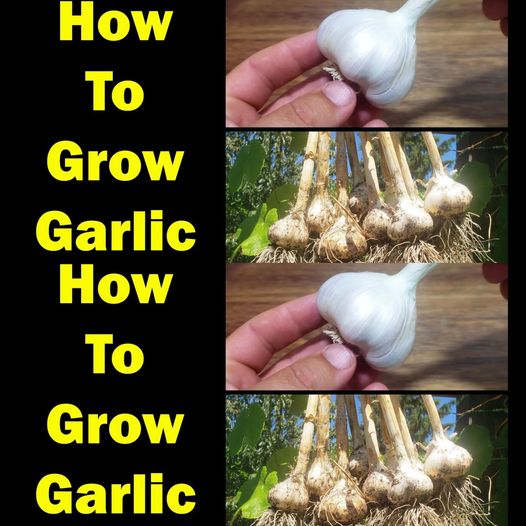Ingredients:
- Garlic cloves (choose healthy, plump cloves from your local garden center or organic grocery store)
- Well-drained soil (pH level between 6.0 and 7.5)
- Organic compost or well-rotted manure
- Mulch (such as straw or shredded leaves)
- Water
Tools:
- Garden trowel or spade
- Watering can or hose
- Gardening gloves (optional)
Instructions:
- Choose the Right Garlic:
- There are two main types of garlic: Hardneck and Softneck. Hardneck garlic is more cold-hardy and has a stronger flavor, while Softneck garlic is more suited for warmer climates and has a milder taste.
- Select the best garlic bulbs by choosing large, healthy, and firm cloves. Avoid using cloves that are soft, shriveled, or moldy.
- Prepare the Soil:
- Garlic thrives in well-drained, fertile soil. Choose a sunny spot in your garden where the soil drains well.
- Before planting, work organic compost or well-rotted manure into the soil to improve fertility and structure.
- Aim for a soil pH of 6.0 to 7.5. You can test your soil pH with a home test kit and adjust if necessary.
- Plant the Garlic:
- Timing: Garlic is typically planted in the fall, about 4-6 weeks before the first expected frost. This allows the cloves to establish roots before winter.
- Spacing: Break the garlic bulb into individual cloves, leaving the papery skin intact. Plant each clove about 2 inches deep, with the pointed end facing up. Space the cloves about 6-8 inches apart in rows that are 12 inches apart.
- Watering: After planting, water the garlic thoroughly to help settle the soil around the cloves.
- Mulch and Protect:
- Cover the garlic bed with a 2-4 inch layer of mulch, such as straw or shredded leaves. Mulching helps retain moisture, suppress weeds, and protect the cloves from extreme temperatures.
- In colder climates, a thicker layer of mulch may be needed to protect the garlic over the winter.
- Care for Your Garlic:
- Watering: Garlic needs consistent moisture, especially during the spring and early summer when the bulbs are forming. Water the garlic deeply but avoid waterlogging, as garlic does not tolerate soggy soil.
- Weeding: Keep the garlic bed free from weeds, which can compete with the garlic for nutrients and water.
- Fertilizing: If your soil is not rich, you can side-dress the garlic with compost or a balanced organic fertilizer in the spring as the plants start to grow.
- Harvesting:
- Garlic is typically ready to harvest in mid-summer when the lower leaves start to turn yellow and brown.
- Gently dig up the bulbs using a garden fork, being careful not to damage them.
- Allow the garlic to cure in a warm, dry, well-ventilated area for 2-3 weeks. Once cured, the outer skin will be dry and papery.
- Storing:
- After curing, trim the roots and cut the stems, leaving about an inch of stem attached to the bulb.
- Store the garlic in a cool, dark, and dry place. Properly stored garlic can last for several months.
Additional Tips:
- Rotate your garlic crops each year to prevent soil-borne diseases.
- Consider planting different varieties to see which grows best in your climate.
- Save the best bulbs from your harvest to plant next year.
Enjoy the satisfaction of growing your own garlic, and savor the flavor it brings to your kitchen!


